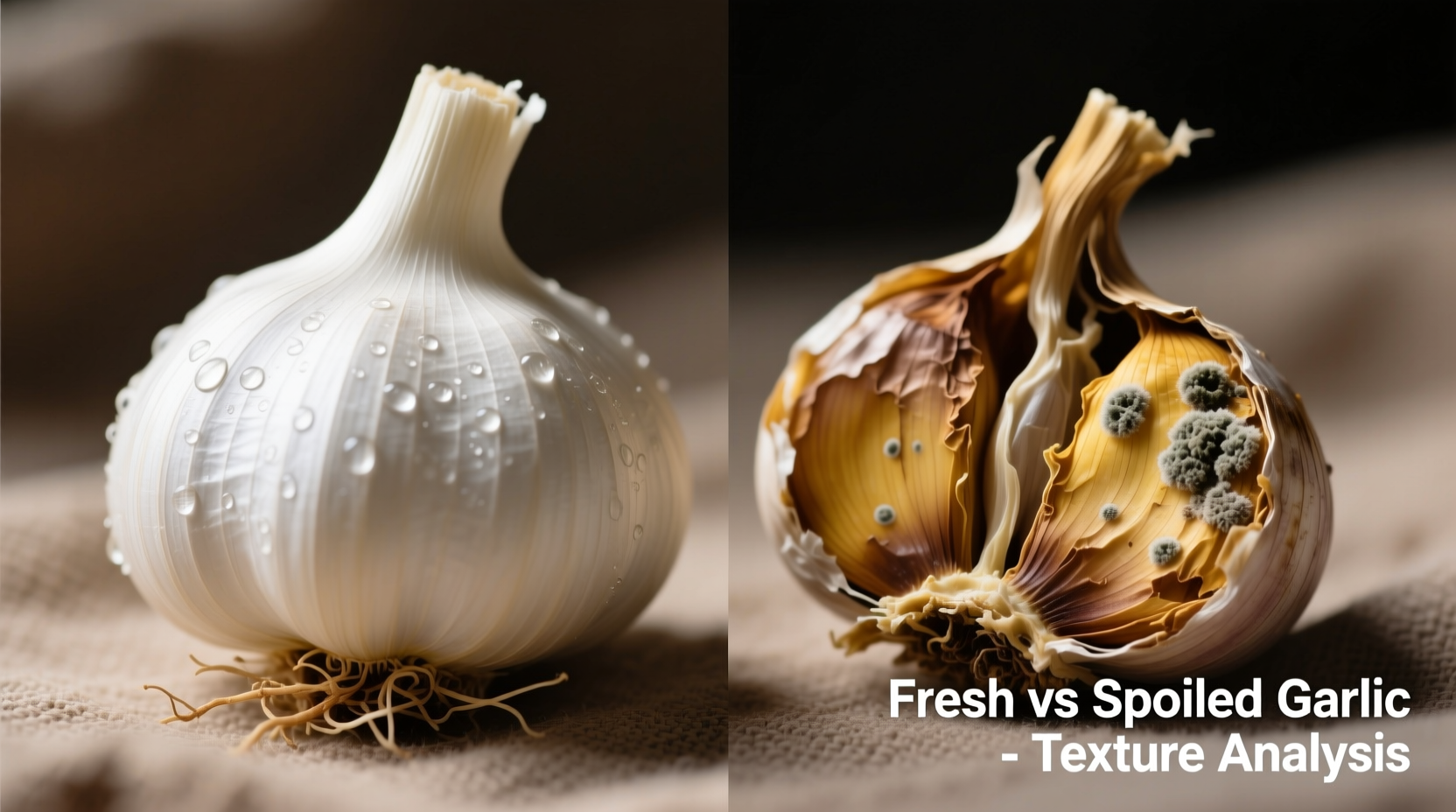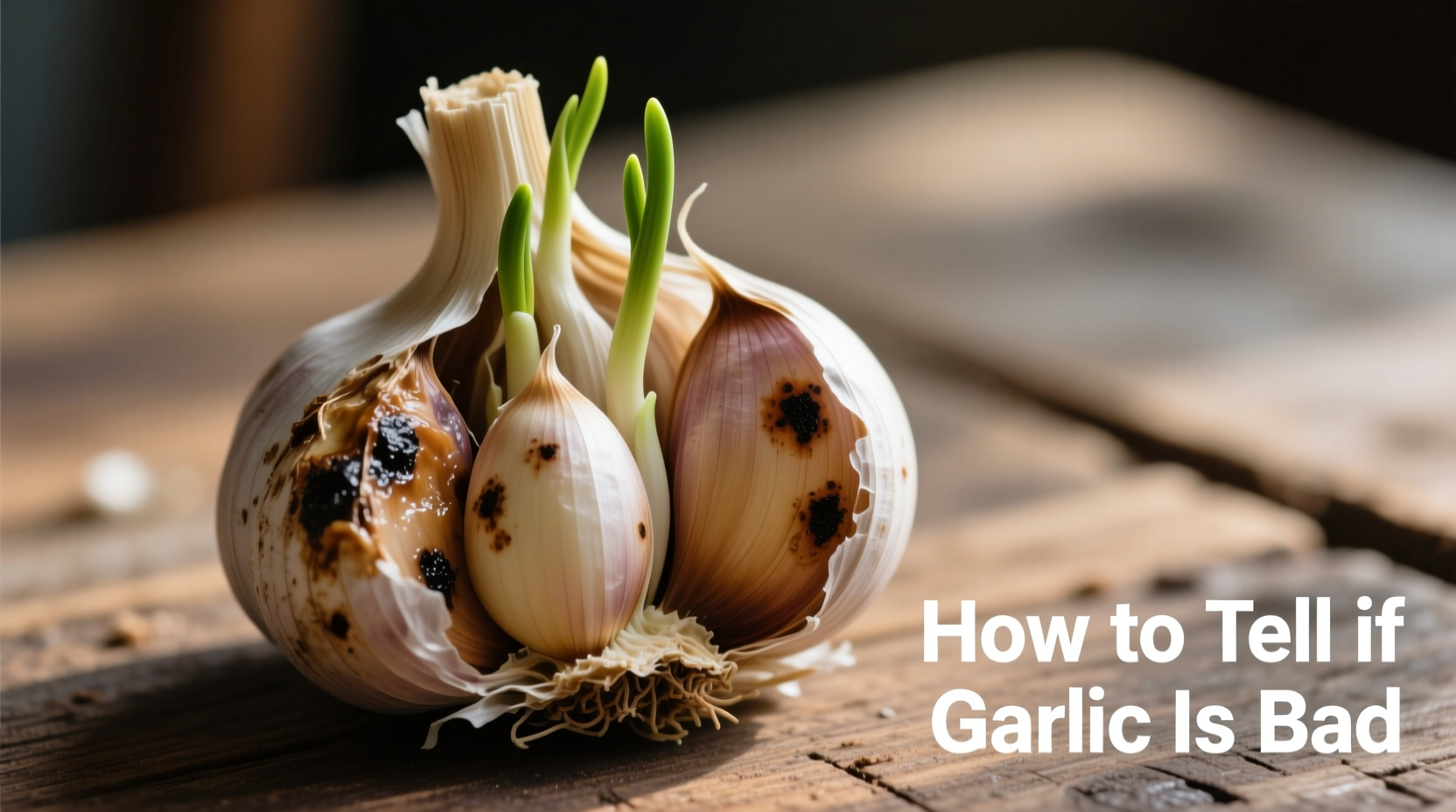Garlic has gone bad when it shows visible mold, feels soft or mushy, develops brown or yellow spots, emits a sour smell, or has green sprouts growing from the center. Fresh garlic should be firm, dry, and have tight white or purple-tinged skin with no discoloration or soft spots.
Discovering spoiled garlic in your kitchen can ruin a meal and potentially make you sick. Knowing exactly how to tell if garlic has gone bad helps prevent food waste while keeping your family safe. This guide provides clear, science-backed indicators that anyone can use to assess garlic quality—no special equipment required. You'll learn to identify subtle warning signs before they become serious problems, understand proper storage techniques that extend freshness, and recognize when questionable garlic is still safe to use.
Step-by-Step Garlic Quality Assessment
Follow this practical inspection process the next time you reach for garlic in your kitchen. These steps mirror how professional chefs and food safety experts evaluate garlic quality.
1. Visual Inspection: What to Look For
Start by examining your garlic cloves with these specific criteria:
- Skin condition: Fresh garlic has dry, papery skin that's tight against the cloves. Loose, peeling, or powdery skin indicates aging.
- Color changes: White or purple-tinged skin shows freshness. Yellow, brown, or black spots signal spoilage.
- Mold presence: Any fuzzy growth (white, green, or black) means immediate discard.
- Green sprouts: While not dangerous, central sprouting indicates aging and bitter flavor development.
| Condition | Fresh Garlic | Going Bad | Danger Zone |
|---|---|---|---|
| Texture | Firm, hard to squeeze | Slightly soft spots | Mushy, dents remain |
| Smell | Sharp, clean aroma | Mild odor loss | Sour, unpleasant smell |
| Color | White/purple skin | Yellow/brown spots | Black patches, mold |
| Internal Condition | Crisp white flesh | Grayish tinge | Dark streaks, slime |
2. The Squeeze Test: Texture Matters
Gently press cloves between your fingers. Properly stored garlic should feel rock-hard with no give. Soft spots indicate moisture buildup and bacterial growth. According to USDA food safety guidelines, any garlic that leaves an indentation when pressed has likely begun to decompose internally, even if surface appearance seems normal. This texture deterioration happens as enzymes break down cell structure, creating ideal conditions for microbial growth.
3. The Smell Check: Your Nose Knows
Fresh garlic has a clean, sharp aroma. As it spoils, the scent becomes sour or unpleasant—similar to old cooking oil. Trust your nose: if the smell makes you hesitate, discard it. Food science research from UC Davis shows that volatile sulfur compounds in garlic change composition as it spoils, creating these off-odors that signal chemical breakdown.

4. Cutting Inspection: When Surface Isn't Enough
Sometimes spoilage starts internally. If visual and smell tests are inconclusive, cut a small slice:
- Fresh garlic shows pure white cross-section with crisp texture
- Questionable garlic may have yellow streaks or grayish tinge
- Dangerous garlic displays black spots, slimy texture, or dark veins
Remember that mold roots can penetrate deeper than visible surface growth. The National Center for Home Food Preservation warns that cutting away moldy portions isn't safe with dense foods like garlic—the entire clove should be discarded if any mold appears.
Context Matters: When Slightly Aged Garlic Is Still Usable
Not all changes mean immediate danger. Understanding context boundaries helps reduce food waste:
- Green sprouts: The central sprout in older garlic is bitter but not harmful. Simply remove it before use.
- Loose skin: Outer layers drying out is normal. Peel additional layers until reaching firm cloves.
- Single soft clove: In multi-clove bulbs, remove only affected cloves if others remain firm.
However, never risk using garlic showing multiple warning signs. The FDA emphasizes that when in doubt about food safety, "when in doubt, throw it out" remains the safest policy for perishable items.
Preventing Garlic Spoilage: Proven Storage Methods
Extend your garlic's shelf life with these evidence-based storage techniques:
- Airflow is critical: Store in mesh bags or open baskets—never sealed plastic
- Temperature control: Keep between 60-65°F (15-18°C) away from heat sources
- Moisture management: Avoid refrigeration which promotes sprouting and mold
- Whole bulb advantage: Unpeeled bulbs last 3-6 months; individual cloves last 7-10 days
University of Georgia food safety researchers found that garlic stored in ventilated containers at room temperature maintained quality 40% longer than refrigerated samples. For long-term storage, freeze peeled cloves in oil for up to 12 months—perfect for garlic-infused cooking.
Health Risks of Consuming Bad Garlic
Eating spoiled garlic isn't just unpleasant—it can cause foodborne illness. The primary concerns include:
- Botulism risk: In oil-stored garlic without proper acidification
- Bacterial growth: Salmonella and E. coli thrive in moist, decaying garlic
- Mold toxins: Some molds produce harmful mycotoxins that survive cooking
The Centers for Disease Control specifically warns that improperly stored garlic in oil creates ideal conditions for Clostridium botulinum growth, which can cause life-threatening illness. When garlic shows multiple spoilage indicators, the risk isn't worth taking.
Practical Garlic Safety Checklist
Before using garlic, run through this quick assessment:
- Examine for mold, discoloration, or soft spots
- Squeeze gently for firmness throughout
- Sniff for sour or unpleasant odors
- Peel and inspect interior if uncertain
- Discard immediately if any warning signs appear











 浙公网安备
33010002000092号
浙公网安备
33010002000092号 浙B2-20120091-4
浙B2-20120091-4